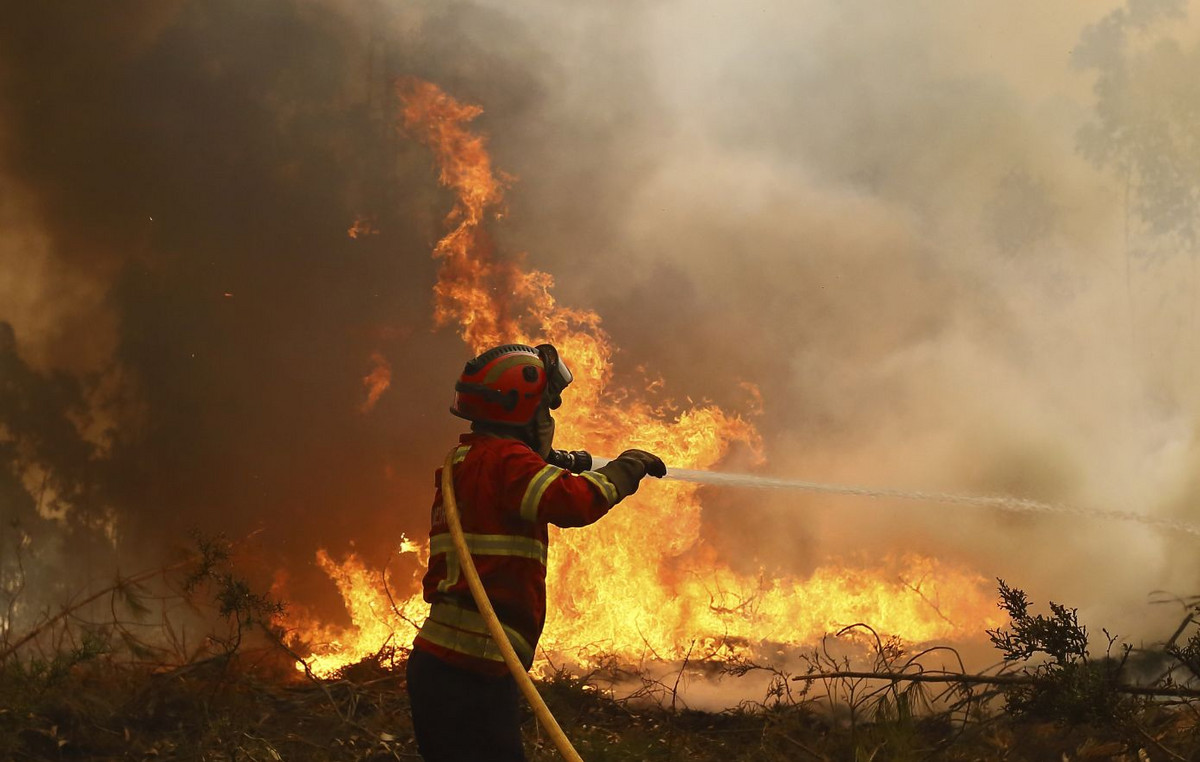Meteorologists will soon be able to see real-time mapping of Earth’s lightning activity and closely monitor solar storms, thanks to a new weather satellite.
NASA and the National Oceanic and Atmospheric Administration (NOAA) jointly launched GOES-U, or the Geostationary Operational Environmental Satellite U mission, on Tuesday (25).
The weather satellite took off aboard the SpaceX Falcon Heavy rocket from the Kennedy Space Center in Florida at 5:26 p.m. local time. The launch was broadcast live on the NASA website.
Weather conditions in Florida were 60 percent favorable at the start of the launch window.
GOES-U is the fourth and final satellite in the R series of Geostationary Operational Environmental Satellites, “the most sophisticated weather observing and environmental monitoring system in the Western Hemisphere,” according to NOAA.
“The GOES-R series of satellites has been a game-changer for us,” said Ken Graham, director of NOAA’s National Weather Service, during a press conference on Monday. “Since the first release of the series in 2016, the latest generation of GOES has enabled new and improved forecasting and warning services to help save lives and protect property.”
Once GOES-U reaches geostationary orbit, or a circular orbit above Earth’s equator, the satellite will be renamed GOES-19, or GOES East. The satellite will replace GOES-16, the former GOES East satellite launched in 2016, and will work in conjunction with GOES-18, also known as GOES West. In the meantime, GOES-16 will essentially become a “spare tire” for the system, in orbit in case one of the satellites fails.
Together, the GOES-18 and GOES-19 satellites will collect atmospheric, solar, climate and ocean data and cover more than half the globe, from the west coast of Africa to New Zealand.
What sets GOES-U apart from other satellites is that it is equipped with a new capability to monitor space weather.

Tracking solar activity
As the Sun approaches solar maximum — the peak of its 11-year cycle, expected to occur this year — it becomes more active. Researchers have observed increasingly intense solar flares and coronal mass ejections erupting from the Sun’s surface.
Coronal mass ejections are large clouds of ionized gas called plasma and magnetic fields that escape from the Sun’s outer atmosphere.
When these eruptions are directed toward Earth, they can cause geomagnetic storms, or large disturbances in Earth’s magnetic field. With these events, there is always a risk that communications, the power grid, navigation, and radio and satellite operations will be affected.
The most intense solar storm to affect Earth in 20 years occurred on May 10, but fortunately only brought aurora borealis to the skies of states and countries that never see the northern lights under normal conditions.
Increased solar activity causes auroras to dance around Earth’s poles, known as the northern lights (or aurora borealis) and the southern lights (or aurora australis). When energized particles from coronal mass ejections reach Earth’s magnetic field, they interact with gases in the atmosphere to create colorful lights in the sky.
GOES-U carries multiple instruments that will improve detection of space weather hazards, including the Compact Coronagraph-1, which can detect solar flares and coronal mass ejections, and characterize the size, speed, density and direction of these solar storms.
The coronagraph will provide continuous observations of the solar corona, the hot outer layer of the sun’s atmosphere where space weather events originate, said Elsayed Talaat, director of NOAA’s Office of Space Weather Observations.
The instrument’s abilities will allow NOAA’s Space Weather Prediction Center to issue warnings and alerts one to four days in advance and “mark a new chapter in space weather observation,” Talaat said.
Compact Coronagraph-1 is the world’s first operational coronagraph satellite to better monitor the sun, said Steve Volz, assistant administrator for NOAA’s Satellite and Information Service.
“This new instrument will provide images of the solar corona to our forecasters at the Space Weather Prediction Center within 30 minutes, compared to the previous time it took about eight hours,” Graham said. “Geomagnetic storms can impact our infrastructure here on Earth, putting our power grid, communications, navigation systems, aviation and space assets at risk. Better and faster observation will help us better alert our infrastructure providers of potential risks so they can take action.”
In real time
From space, GOES-U will monitor real-time weather, climate and environmental hazards across North, Central and South America, the Caribbean and the Atlantic Ocean to the west coast of Africa.
From its unique vantage point, GOES-U will be able to detect tropical storms, send alerts to forecasters as storms form in the Atlantic Ocean, and provide near real-time monitoring and tracking.
The satellite carries a range of scientific instruments, including imaging and mapping technology, that will allow it to capture valuable data about hurricanes, such as upper-level wind speeds, specific features of the hurricane’s eye and lightning activity, all of which can help forecasters better understand potential hazards.
GOES-U will carry the first operational lightning mapper flown in geostationary orbit. As storms develop, they tend to experience spikes in lightning activity. Understanding how storms develop and intensify can help meteorologists better predict whether storms will be capable of causing flash flooding, hail, damaging winds or spawning tornadoes.
The lightning mapper will take pictures of the Earth at a rate of 500 times per second to track lightning like never before, Sullivan said.
GOES-U’s main camera can zoom in to track dangerous weather and environmental conditions every 30 seconds, a capability that enables better warning systems, said Pam Sullivan, NOAA’s GOES-R program director.
Forecasters can also use GOES-U’s instruments to identify wildfire risks, including hotspots, intensity, smoke output and air quality impacts, and even data that can help trackers predict the movement of fires. The satellite can also use its lightning mapper to determine which lightning strikes are most likely to start wildfires.
Other environmental hazards that GOES-U can track include real-time imaging of haze and low clouds that can impact air and sea travel, as well as detecting volcanic eruptions and ash and sulfur dioxide spewed by volcanoes.
It will also be able to monitor atmospheric events in rivers, or large sections of the Earth’s atmosphere that transport moisture from the equator to the poles, which are capable of causing floods and landslides.
In addition to providing early warning of hurricane formation, GOES-U can also collect climate data from Earth’s oceans, such as signals from marine heatwaves and sea surface temperatures, which impact the marine food web and can lead to mass coral bleaching events.
Source: CNN Brasil
Charles Grill is a tech-savvy writer with over 3 years of experience in the field. He writes on a variety of technology-related topics and has a strong focus on the latest advancements in the industry. He is connected with several online news websites and is currently contributing to a technology-focused platform.







